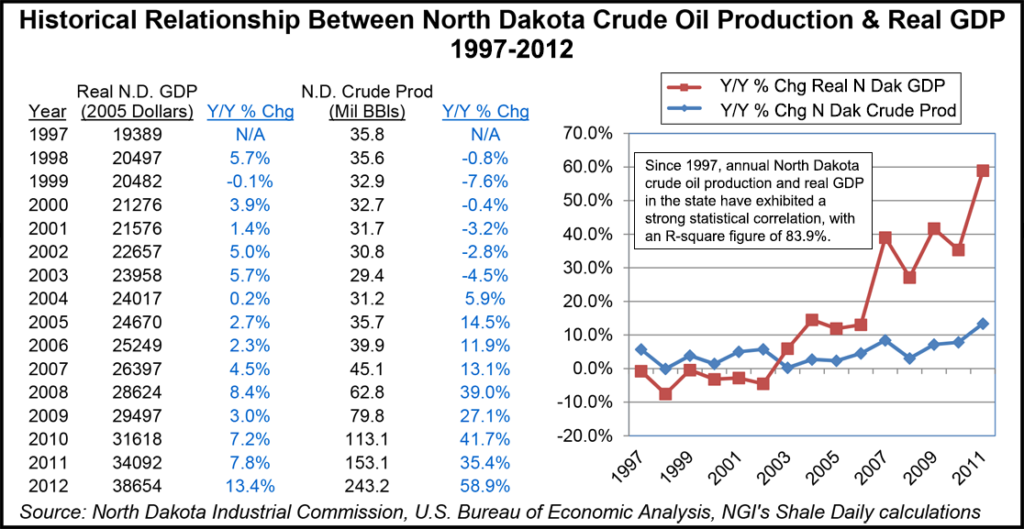Bakken Shale | E&P | NGI All News Access
North Dakota Survey Finds Strong Support for Continued Energy Development
A clear majority of North Dakota residents supports expanding oil and natural gas development, indicating in a survey that the benefits outweigh the risks.

The annual survey for the North Dakota Petroleum Council (NDPC), found there still are concerns about the impacts on local community infrastructure.
Moore Information Inc. conducted the survey for the state in November with 794 telephone interviews, including 600 with a representative sample of voters statewide, and 194 others among citizens living in the 19 counties with active energy production.
The survey found that 73% think energy development benefits outweigh the risk, and 83% believe development should increase or stay the same. Residents also think the state is making progress in reducing the amounts of associated gas flared at well sites.
The industry boom tied to the Williston Basin’s Bakken Shale development has helped revitalize local economies and created new opportunities statewide, NDPC President Ron Ness said. He called the energy development a gamechanger, particularly for the western part of the state.
Since 1997, annual North Dakota crude oil production and real gross domestic product have exhibited a strong statistical correlation, according to North Dakota Industrial Commission and U.S. Bureau of Economic Analysis data.
The survey found that while most residents are supportive of the energy industry, they also have concerns about the impacts on infrastructure,quality of life and safety in western North Dakota. They also indicated they are concerned about the wear and tear on roads and other infrastructure, traffic volumes, availability of housing, and crime/safety issues, Ness said.
“The industry recognizes that there are challenges that come with the rapid growth,” he said, and the survey will help the industry work on some of these concerns.
“We remain committed to helping with these impacts, whether it is through working on solutions to each new challenge, charitable support or pushing for more of the tax dollars generated being directed back to those counties and communities to meet their needs.”
Respondents indicated that before energy-related tax dollars are used for wildlife and state parks, they want tax dollars to go toward schools and education, roads and infrastructure, along with reducing their property taxes.
© 2024 Natural Gas Intelligence. All rights reserved.
ISSN © 2577-9877 | ISSN © 2158-8023 |
